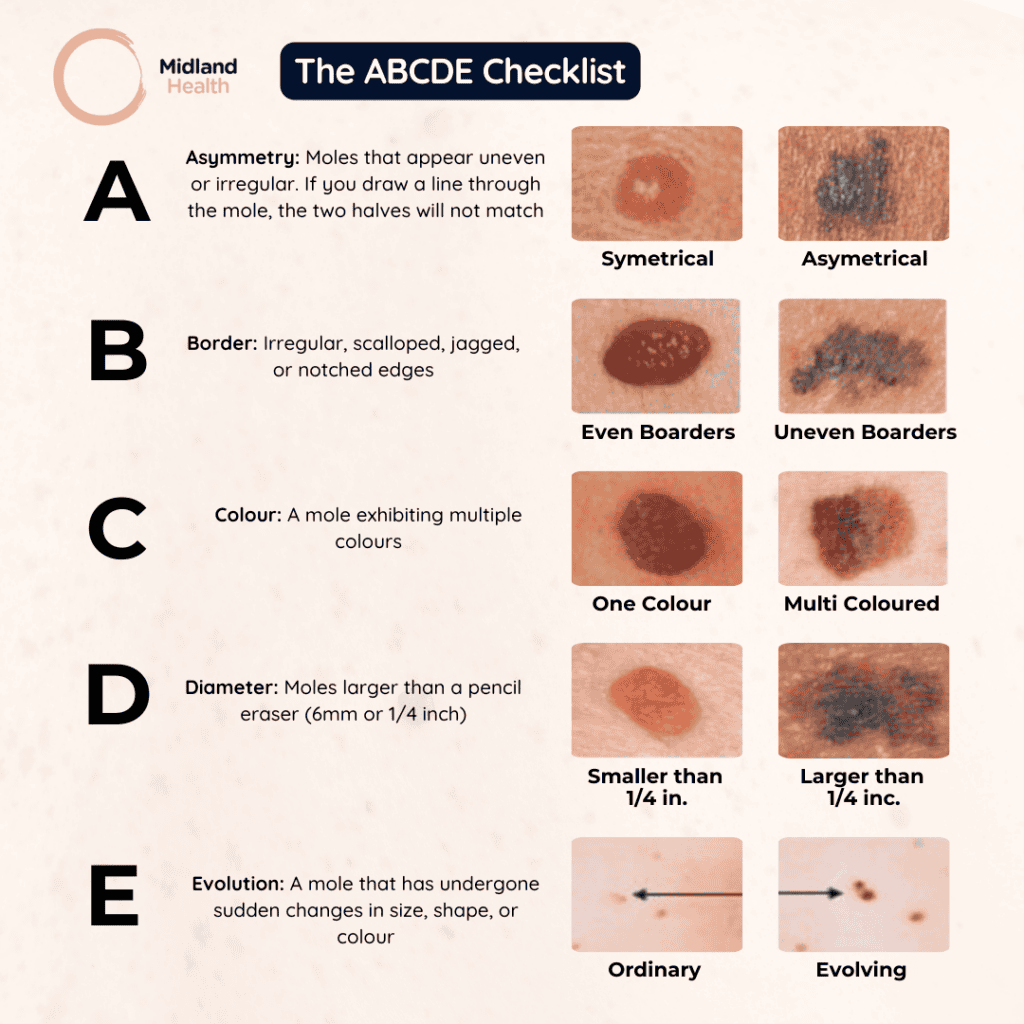Skin cancer is one of the most common types of cancer globally, with millions of cases diagnosed each year. While not all skin lesions or moles are cancerous, it’s essential to be vigilant about changes in your skin and seek medical attention if you notice anything suspicious, but, how do you know when a mole or skin lesion warrants a trip to the doctor?
In this article, we’ll discuss the signs and symptoms to watch for and when it’s time to schedule an appointment with a healthcare professional.
Signs To Watch For:
1. Change in Size: Keep an eye on any moles or skin lesions that have changed in size, particularly if they have grown larger over time.
2. Change in Colour: Pay attention to moles or lesions that have changed in colour or have developed multiple colours within them.
3. Irregular Borders: Healthy moles typically have smooth, even borders. If you notice irregular or jagged edges, it could be a cause for concern.
4. Asymmetry: A mole or lesion that is asymmetrical, meaning one half doesn’t match the other half, could be a sign of skin cancer.
5. Evolution: Any changes in the appearance of a mole or skin lesion, such as itching, bleeding, or crusting, should be evaluated by a doctor.
6. Size: Moles larger than the size of a pencil eraser (about 6 mm in diameter) should be monitored closely and examined by a healthcare professional.
When To See A Doctor:
If you notice any of the above signs or symptoms, it’s essential to schedule an appointment with a dermatologist or healthcare provider. Additionally, individuals with a personal or family history of skin cancer should be particularly vigilant about monitoring their skin and seeking medical attention promptly if they notice any changes.
It’s also crucial to remember the ABCDEs of melanoma:
– A for Asymmetry: One half of the mole does not match the other half.
– B for Border: The edges are irregular, ragged, notched, or blurred.
– C for Colour: The colour is not uniform and may include shades of brown or black, or even patches of pink, red, white, or blue.
– D for Diameter: The size of the mole is larger than 6 millimetres across, about the size of a pencil eraser.
– E for Evolution: The mole is changing in size, shape, or colour.
Early detection is key to successfully treating skin cancer, so it’s important not to ignore any changes in your skin. If you notice a suspicious mole or skin lesion, don’t hesitate to schedule an appointment with a dermatologist or healthcare provider for evaluation and, if necessary, further testing. Your health and well-being are worth prioritizing, and seeking prompt medical attention can make all the difference in catching skin cancer early and ensuring the best possible outcome.


